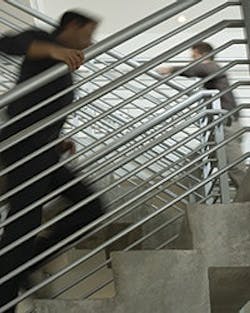Can Buildings Combat Obesity?
Because most people spend as much as 90% of their days indoors engaged in sedentary activities, building design provides an untapped opportunity to promote regular and important instances of physical activity.
The Active Design Guidelines: Promoting Physical Activity and Health in Design outlines how active design – architecture, interior design, and urban planning that encourages physical movement – can reduce the incidence of medical problems.
The task of creating buildings that are movement friendly depends on the integration of active design philosophies into the building’s circulation systems and its program.
These four key opportunities can encourage dynamic motion while supporting accessibility for individuals of all mobility levels:
- The building’s circulation system, including interior spaces, corridors, stairs, elevators, and lobbies that connect various spaces. These features can provide opportunities for walking, the most popular type of physical activity.
- Individual building elements, such as stairs, exercise rooms, shower rooms, bicycle storage, or plazas. The design of these elements can either promote or deter activity through their availability, convenience, desirability, safety, and comfort. Providing conveniences like drinking fountains and benches can further support physical activity. In contrast, features such as unneeded escalators, an overemphasis on elevators, and barriers like door locks, grade changes, non-ergonomic design, and poor placement of building elements can deter physical activity.
- Careful organization of the building’s wellness program to encourage walking between destinations. Building inhabitants can exercise through regular travel to the mailbox, printer, restroom, or cafeteria areas.
- The provision and design of programmed activity spaces, including exercise rooms, swimming pools, running tracks, multipurpose rooms, and other specialized spaces designated as venues for physical activity.
The guide was compiled by the New York City Departments of Design and Construction (DDC), Health and Mental Hygiene, Transportation (DOT), and City Planning. Download it at nyc.gov.
